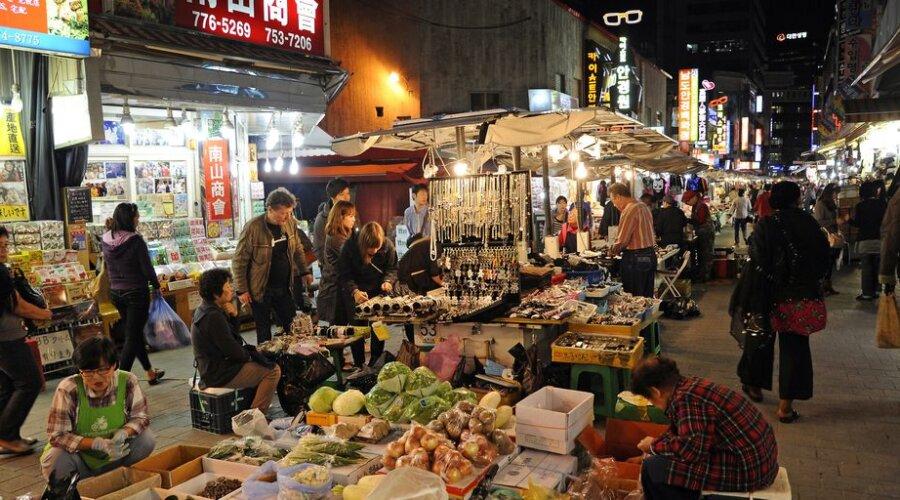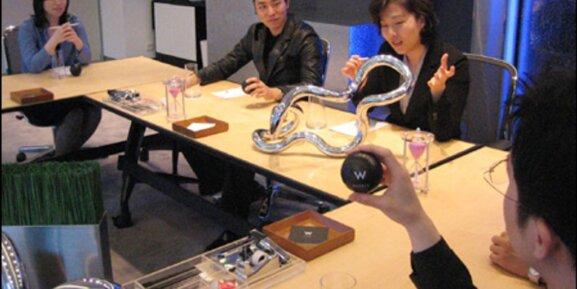“Seoul Food Scene: Insider’s Guide to Dining in South Korea’s Capital”
Seoul is a city of rich traditions and rapid innovation, and this combination is most apparent in its thriving food scene. From bustling street food markets to high-end Michelin-star restaurants, the South Korean capital offers a culinary adventure for every palate. Whether you’re in the mood for traditional Korean BBQ, vegan delights, or late-night eats, Seoul has something to satisfy every craving. Join us as we explore the diverse and delicious food scene of South Korea’s vibrant capital.
Key Takeaways
- Seoul’s food scene is one of the world’s best, offering a diverse range of culinary experiences.
- Street food in Myeongdong and traditional markets like Gwangjang are must-visit spots for food lovers.
- The city boasts a variety of dining options, from ancient tea houses to modern dessert cafes and Michelin-star restaurants.
- Late-night eats and vegan/vegetarian options are plentiful, ensuring that all dietary preferences are catered to.
- Seoul’s food culture is a blend of tradition and innovation, providing a unique and memorable dining experience.
Street Food Adventures in Myeongdong
Myeongdong is a bustling hub for street food lovers. The vibrant streets are lined with stalls offering a variety of mouth-watering snacks that are sure to tantalize your taste buds. From sweet to savory, there’s something for everyone.
Traditional Korean BBQ Spots
Top BBQ Restaurants
When it comes to Korean BBQ, Mongtan and Geumdwaeji Sikdang are must-visit spots. Mongtan is famous for its beef ribs seared over charcoal and organic rice straw. Don’t miss their onion-fried rice! For a more casual vibe, head to Geumdwaeji Sikdang, also known as the Golden Pig, where their YBD samgyupsal attracts K-pop stars and locals alike.
What to Expect
Expect a cozy atmosphere with a social vibe. Many places offer a shared bathroom and kitchen access, making it easy to mingle with other guests. The servers usually handle the grilling, so you can sit back and enjoy your meal. Be prepared for long waiting lines, especially at popular spots like Yukjeon Sikdang.
Tips for First-Timers
- Arrive early to avoid long waits.
- Choose a variety of meats to get the full experience.
- Don’t be shy to ask the servers for help with grilling.
- Enjoy the social atmosphere and make new friends.
Korean BBQ is not just a meal; it’s an experience. From the quality of the meat to the social atmosphere, every aspect is designed to make your dining experience memorable.
Exploring Gwangjang Market
Iconic Dishes
Gwangjang Market is a food lover’s paradise. For kimbap – sushi-like rolls of seaweed (kim) wrapped around rice (bap) – head to this bustling market. The market is also famous for its bindaetteok, crispy mung bean pancakes that are fluffy in the center and often stuffed with pork or seafood. Don’t miss out on trying these iconic dishes while you’re there.
Navigating the Market
Navigating Gwangjang Market can be a bit overwhelming due to its size and the sheer number of stalls. The market covers more than 450,000 square feet and houses around 5,000 stalls and shops. To make the most of your visit, consider starting at the main entrance and working your way through the sections dedicated to different types of goods, from lacquerware to clothing. Most visitors, however, come for the street food, so be sure to prioritize that.
Local Favorites
Local favorites at Gwangjang Market include the aforementioned bindaetteok and kimbap, but there are plenty of other treats to discover. Grab a table in one of the tiny restaurants behind each food stall to enjoy your meal with a bottle of makgeolli (rice wine). The market is also a great place to try other traditional Korean dishes like tteokbokki (spicy rice cakes) and sundae (Korean blood sausage).
Gwangjang Market is not just a place to eat; it’s an experience that immerses you in the vibrant culture and flavors of Seoul.
Tea Houses and Dessert Cafes
Seoul’s tea culture is rich and varied, with traditional tea houses offering a serene escape from the city’s hustle and bustle. One of the best spots is the Traditional Teahouse in Insadong, where you can enjoy teas brewed from native botanicals like ginger, pine needle, and mugwort. The cozy interior and traditional hanok-style courtyard make it a perfect place to relax.
For those with a sweet tooth, Seoul’s modern dessert cafes are a must-visit. From the quirky Line Friends Cafe to the Cinnamoroll Sweet Cafe, where you can strike poses inside a giant pink teacup, these spots are perfect for Instagram-worthy moments. Don’t miss out on the thunder bomb from Remicone or the fish-shaped ice cream that’s as delicious as it is cute.
Seoul is great for new ideas, especially when it comes to desserts. Here are some unique treats you shouldn’t miss:
- Giant macarons
- Deep-fried eggs
- Tiramisu in a cup from Mangwon-dong Tiramisu
The tiramisu has a delightful light, fluffy texture, and you can take it with you to eat while walking around the hippie neighbourhood of Ikseon-dong, which has little flower-lined boutiques on every corner.
Fine Dining in Gangnam
Gangnam is not just about K-pop and high-end shopping; it’s also a haven for foodies looking for an exquisite dining experience. Here, we take a look at some of the best fine dining restaurants Seoul has to offer, showcasing the very best in traditional and cutting-edge Korean cuisine.
Michelin-Star Restaurants
Gangnam boasts several Michelin-starred restaurants that are a must-visit for any food enthusiast. La Yeon and Gaon both hold the prestigious three-Michelin-star rating. La Yeon, led by Chef Kim Sung II, prepares authentic Hansik cuisine with a contemporary touch. Gaon, on the other hand, uses an abundance of local produce and fresh seasonal ingredients to celebrate traditional Korean cuisine. Chief executive chef, Kim Byoung-Jin, has been at the helm for over 15 years, creating elegant, thoughtful dishes inspired by the country’s rich history.
Fusion Cuisine
If you’re in the mood for something innovative, Gangnam’s fusion cuisine scene won’t disappoint. Restaurants like Mosu offer a cheeky blend of traditional Korean ingredients with modern culinary techniques. Korea-born French Laundry alumnus chef Sung Ahn uses native Korean ingredients such as burdock and seaweed to create his own unique dishes. Imagine an abalone taco or preserved and roasted sweet allium (onions) for dessert!
Reservation Tips
Fine dining in Gangnam is a popular activity, so reservations are highly recommended. Here are some tips to ensure you get a table:
- Book in advance: Some restaurants require reservations weeks or even months ahead.
- Check online: Many restaurants offer online booking options through their websites or platforms like OpenTable.
- Call directly: If online options are not available, a direct call can sometimes secure a spot.
- Consider off-peak times: Dining during lunch or early dinner hours can increase your chances of getting a reservation.
Pro Tip: Always double-check your reservation a day before to avoid any last-minute surprises.
Whether you’re a local or a tourist, the fine dining scene in Gangnam offers an unforgettable culinary journey.
Late-Night Eats in Hongdae

Popular 24/7 Spots
Hongdae is a vibrant neighborhood that truly comes alive after dark. Whether you’re craving Korean fried chicken or a hearty bowl of bibimbap, there’s something for everyone. For a unique experience, check out Sanullim 1992, a great hole-in-the-wall bar where you can eat bansang – rice with a few side dishes.
Best Dishes After Dark
When it comes to late-night dining, Hongdae offers a plethora of options. Some must-try dishes include:
- Korean fried chicken from Hyodo Chicken
- Fresh sashimi and mulhoe at Anju Maeul
- Bibimbap at Saebyukjib
Nightlife and Food
Hongdae is not just about food; it’s also a hub for nightlife. The neon-drenched streets are filled with bars, clubs, and eateries that stay open until the early hours. The Sinchon neighborhood, in the northern part of Seoul, is another great spot for late-night adventures. Just pick anywhere that looks good and busy, and you’re sure to have a memorable night.
Hongdae is a place where the night never ends, offering a perfect blend of food, fun, and unforgettable experiences.
Vegan and Vegetarian Delights
When exploring Seoul’s food scene, don’t miss out on the vibrant plant-based options available. From top plant-based restaurants to signature vegan dishes, there’s a variety of choices to satisfy your taste buds. Whether you’re a seasoned vegan traveler or just starting out, Seoul has something for everyone. Dive into the culinary world of vegan and vegetarian delights and discover the unique flavors Seoul has to offer.
Comfort Food in Insadong
Hearty Dishes to Warm Your Soul
Insadong is a haven for those seeking hearty dishes that warm the soul. From traditional Korean porridge, known as juk, to the ever-popular tteokbokki (spicy rice cakes), there’s something for everyone. Don’t miss out on the pojangmacha stalls at Jongno 3-ga, where you can savor a variety of comforting snacks.
Cozy Eateries
The cozy eateries in Insadong offer a perfect escape from the bustling city. One standout is the Traditional Teahouse Insadong, located at 33-1 Insadong-gil, Jongno-gu, Seoul. Here, you can relax in a traditional hanok-style courtyard while enjoying teas brewed from native botanicals like ginger and pine needle. Another gem is Kimchee Guesthouse Busan, which offers affordable and comfortable accommodations in downtown Busan, making it a great base for exploring Insadong’s food scene.
Cultural Significance of Comfort Food
Comfort food in Insadong is not just about taste; it’s about cultural significance. These dishes often have deep roots in Korean history and tradition. For instance, juk has been a staple in Korean households for centuries, often served to the sick or elderly as a form of nourishment. Similarly, tteokbokki has evolved from a royal court dish to a beloved street food, reflecting the dynamic nature of Korean cuisine.
Insadong’s comfort food scene offers a unique blend of history, culture, and flavor, making it a must-visit for any food lover.
Conclusion
Seoul’s food scene is a vibrant tapestry of flavors, traditions, and innovations. Whether you’re wandering through bustling markets, savoring street food, or dining at high-end restaurants, there’s always something new and exciting to try. From the best dalgona near N Seoul Tower to the hidden gems in narrow alleyways, every meal in Seoul is an adventure. So, grab your chopsticks and get ready to explore the culinary delights of South Korea’s capital. Happy eating!
Frequently Asked Questions
What are some must-try street foods in Myeongdong?
Some must-try street foods in Myeongdong include tteokbokki (spicy rice cakes), hotteok (sweet pancakes), and odeng (fish cake skewers).
When is the best time to visit Seoul for food lovers?
The best time to visit Seoul for food lovers is from late March to early June or from September to October, when the weather is pleasant and there are many food festivals.
What should I expect at a traditional Korean BBQ restaurant?
At a traditional Korean BBQ restaurant, you can expect to grill your own meat at the table, enjoy a variety of side dishes (banchan), and experience a lively and social dining atmosphere.
Are there vegan and vegetarian options available in Seoul?
Yes, Seoul has a growing number of vegan and vegetarian restaurants offering a variety of plant-based dishes, from traditional temple food to modern vegan cuisine.
What are some iconic dishes to try at Gwangjang Market?
Iconic dishes to try at Gwangjang Market include bindaetteok (mung bean pancakes), mayak gimbap (mini seaweed rice rolls), and yukhoe (Korean-style steak tartare).
Do I need to make reservations at fine dining restaurants in Gangnam?
Yes, it is highly recommended to make reservations at fine dining restaurants in Gangnam, especially at Michelin-starred establishments, to ensure you get a table.



